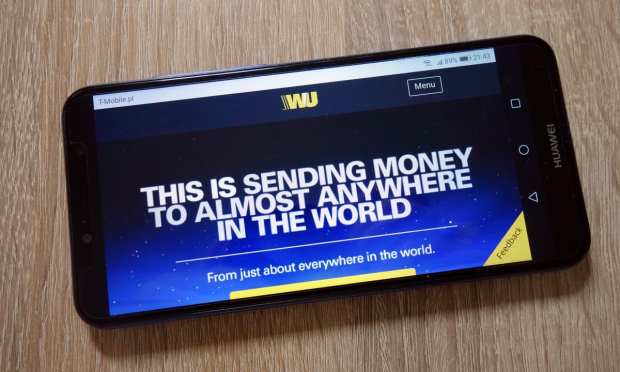Western Union CFO: Pandemic Tailwinds Fuel Digital Remittances

When the World Bank issued its 2020 predictions for the remittances market, it was bad news for service providers in the space. The report, released back in April, predicted the sharpest-ever decline in remittance volume, projecting a 20 percent drop in remittance activity.
Interestingly, the World Bank cited the pandemic and related shutdown as the main cause of the trend, pointing to lower wages and lost jobs as a key factor.
It wasn’t a prediction that Western Union took to heart, however.
“We also see the market declining, [but] we had never expected it to decline by 20 percent,” said WU Chief Financial Officer Raj Agrawal in an interview with Karen Webster.
The latest quarterly numbers offer weight behind that sentiment, with WU beating analyst expectations when it released its third quarter earnings results late last week. While the company’s retail operations saw a slowdown, digital channels saw a spike in activity with several factors actually contributing to a heightened demand among consumers to send and receive money.
But that’s not to say the company has avoided any impact from the pandemic. The coronavirus crisis is influencing nearly all aspects of operations, from remittances to its white label platform, affecting WU’s short- and longer-term outlooks in both positive and negative ways.
A Short-Term Remittance Boom
The pandemic’s influence on the current market has actually created greater demand for individuals to send money to others both at home and abroad, said Agrawal, pointing to travel restrictions as one factor behind this trend.
“In this environment that we’ve been in, new needs have been created around the world,” he said. “There’s an even higher need to receive money these days.”
At the same time, the pandemic also created a need for individuals to send money digitally. WU’s digital services were a bright spot in last week’s earnings report, with Agrawal noting $600 million in revenues last year from WU’s digital operations. This year, he projected, that figure will reach $800 million or beyond.
As much as 80 percent of the users on WesternUnion.com are new customers, but these individuals flocking to digital services may actually be stickier than customers on non-digital channels. That’s because WU can more easily and directly connect online users to deals and offers, and more effectively foster an account relationship, with Agrawal predicting many of these new customers likely to stick around as long-term customers even after the pandemic.
Also supporting WU’s growth is not only the rise in volume of transactions being sent and received, but the higher principal per transaction, both in the company’s retail and digital channels, with more high-income earners using its solutions (although, Agrawal added, WU’s retail business hasn’t yet fully recovered to pre-pandemic levels).
Despite the World Bank’s prediction, it seems that the need to send and receive money has actually elevated, so long as consumers have the ability to do so digitally.
“What’s happening here is consumers have likely changed their behavior during these months,” he said. “We think some of it is going to stick. Some of it will go back to what it was. But because there’s such a strong need to receive money, people are prioritizing that as a key use of their cash.”
A Long-Term Outlook For Growth
Not every effect of the pandemic has been a positive one for WU, however.
Citing macroeconomic headwinds from the pandemic, Agrawal acknowledged a slowdown in B2B operations as corporate travel and global trade volumes remain suppressed. Still, he said he remains optimistic in the long run.
“There is some great long-term growth opportunities for the B2B business,” he said. “In the short-term, it’s going to move with global trade, and that’s down dramatically this year. But it will continue to progress.”
The biggest areas of opportunity for WU include a vertically focused approach to B2B services, with Agrawal citing industries like the education and legal services sectors in need of solutions designed for their specific needs. And with small businesses following consumers’ path in demanding more digital services, Western Union Business Solutions’ Edge digital platform is another key focus for long-term growth for the company.
As far as the B2B opportunity to service larger enterprise customers, Agrawal highlighted WU’s white label platform as another opportunity for long-term growth as more non-bank organizations seek to introduce financial services to their own customers.
Even further ahead in the future, WU isn’t discounting the potential of cryptocurrency. But for now, said Agrawal, the use case simply isn’t there, with preliminary trials finding crypto and blockchain not showing enough benefits to warrant the addition of digital currency services. Yet as the regulatory landscape surrounding crypto matures, WU’s existing relationships with regulators will position it to quickly adopt crypto services — if, and when, appropriate.
“It doesn’t create efficiencies in the process today,” he said. “It doesn’t mean that that’s not going to be the case forever.”
While WU is readying for some of these long-term trends, the business has already seen significant change in the last few months alone amid dramatic shifts in how consumers want to — and need to — move money.
“We’re in a very different place now than we were when we were sitting back in April or March,” said Agrawal.
